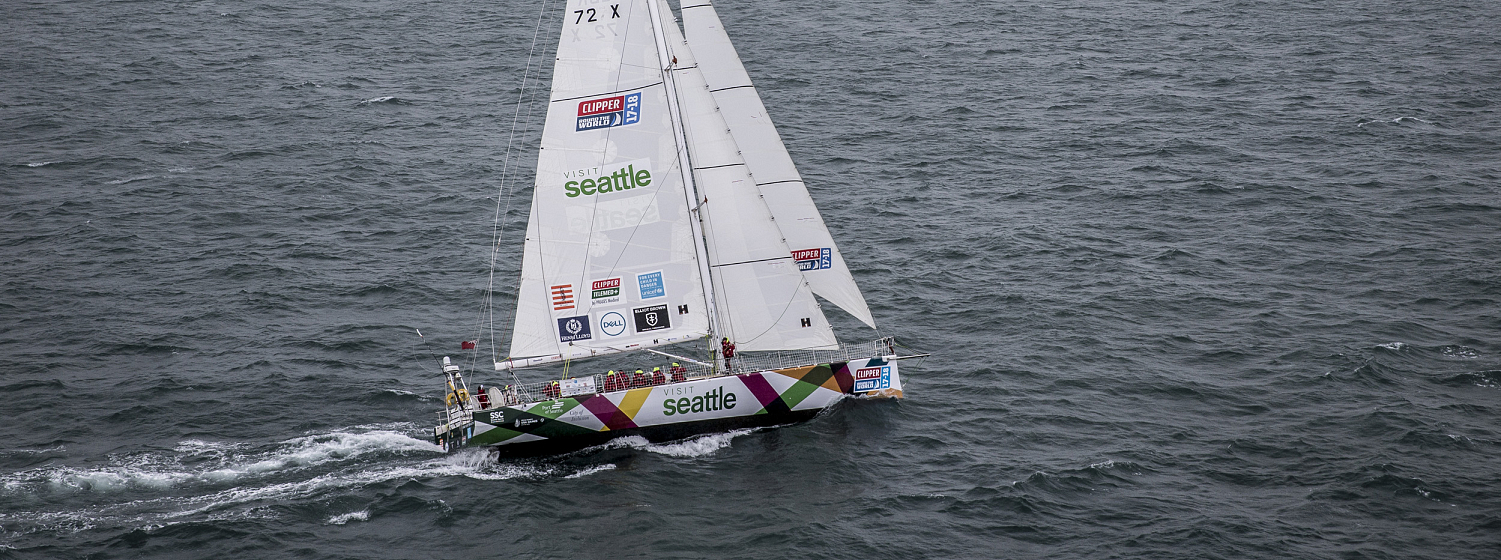Race 3 - Day 12
Crew Diary - Race 3 Day 12: Cape Town to Fremantle
12 November
Recollections of the First Half of Leg 3
The first few days of sailing after leaving Cape Town were fairly routine with light winds. The crew was grateful to have avoided a significant mishap such as had befallen Greenings. The conditions gradually morphed into a strong headwind and a beat that lasted for days. The worst of it was one night when we experienced at least 6 hours of steady winds in the 40s, gusting to 55 or so knots (apparent wind speeds 10 knots stronger). We were surprised by the suddenness of the changes and forced to reef the mainsail and downsize foresails in the worsening weather. The intensity of such a situation is difficult to convey, it must be experienced first hand to be fully appreciated: the instability on deck due to the violent pitching, rolling and 40-60 degree heeling of the boat, the poor visibility caused by the night-time blackness worsened stinging spray and rain driven into your eyes by the strong headwinds, the spectacle of the churning surface of a bitter cold sea several feet away, the deafening flapping of poorly trimmed sails and wind howling in your ears contributing to the inevitable confusion when attempting to coordinate efforts with other crew and the skipper.
The most difficult tasks were performed at the mast and foredeck by our strongest sailors, all of whom performed skilfully and safely. Once again, we were fortunate not to have any mishaps.
For many experienced seamen these conditions are fairly routine, but they were among the most challenging many of our crew had yet experienced. Our 35 ton boat bounced around continuously, bringing motion sickness to many of the crew. At one point I was seated between crew members with buckets partially filled with vomit in their laps while I ate spaghetti carbonara (skilfully prepared by members of the crew) in the saloon from a bowl balanced in my lap, grateful that my 'sea-legs' had carried over from Legs 1 & 2.
The conditions gradually eased and there have been several early morning shifts when my watch team was greeted by a crystal clear cloudless sky with innumerable stars gradually fading to a stunning colourful sunrise. The ocean surface is often relatively quiet, but never quite still, disturbed by waves sent by winds inevitably located somewhere in the surrounding thousand or so miles of ocean.
The most common wildlife we see is sea birds. There are various sizes and shapes, the most impressive of which we have only seen since entering the Southern Ocean, the albatross, a sight few people experience. These large graceful endangered birds soar inches above the ocean surface in perpetual search of food while expending very little energy as they use the lift provided by air currents pushed up by the omnipresent waves. The albatross is easily distinguished from the more numerous, smaller birds such as petrels by their large size and their slower, more graceful, smoother movements. These different species seemingly take little notice of each other.
Several groups of penguins have briefly popped their heads above water near us, a special treat this far from land. A number of whales have been sighted. One jumped above the surface at least 20 times (once every 15-30 seconds) as his course passed diagonally behind ours.
Living in these precarious conditions, sometimes thousands of miles from the nearest continent where we depend on each other, a small team of sailors, for survival and the hope of seeing land again, has given me a fresh perspective on my own life and increased my appreciation of my relationships and my many supporters who may not understand why I am making these voyages, but love and support me just the same. There is no place like home.
